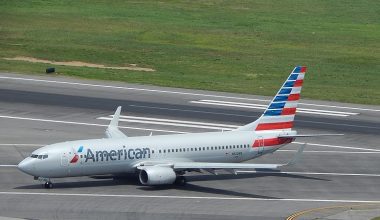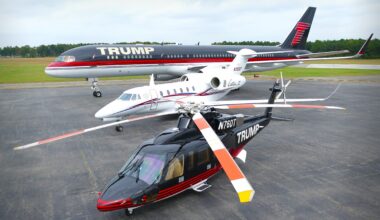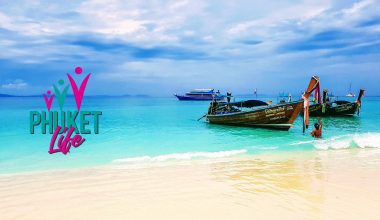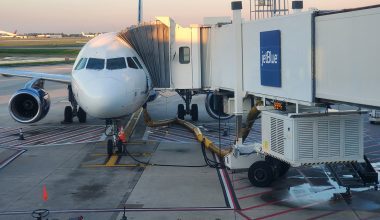If we look at US aviation history, several carriers have given up their ghost in mergers with major airlines. One such airline is low-cost AirTran Airways, which ceased its operations on December 28, 2014, following its integration into Southwest Airlines. AirTran Airways was an Orlando-headquartered budget carrier that began its life as Conquest Sun Airlines in 1993. Twenty-one years later, the airline disappeared from the US aviation landscape forever. Let’s skim through the short-lived career of AirTran Airways.
Background of AirTran Airways
AirTran Airways traced its root to 1993 when it was founded as Conquest Sun Airlines by the management of two small carriers. The airline got its ‘AirTran Airways’ name in 1994 after its acquisition by the AirTran Corporation. The same year, it moved its headquarters from Minneapolis to Orlando, Florida.
Commencing operations as a startup Boeing 737-200 operator, AirTran gradually bolstered its fleet to 11 B737 aircraft. The carrier began offering low-fare leisure travel services to 24 cities around the US Midwest and east coast.

The managerial operation of AirTran Airways took a twist when ValuJet purchased the carrier in 1997. As a result of the acquisition, ValuJet Airlines, infamous for its notorious safety issues, changed its name to AirTran Airlines. The high-profile crash of ValuJet Airlines Flight 592 led to the carrier’s negative publicity and affected its financial health. Following its buyout of AirTran Airways, it adopted the AirTran name to regain passenger traffic. But the high-paying customers never returned, and the carrier eventually ended its existence by merging with AirTran Airways in 1999.
Route map of AirTran Airways
During its 21 years of operation, AirTran marked its footprint in several US cities. The carrier firmly rooted its operations at Atlanta Hartsfield, becoming the second-largest operator behind Delta Air Lines. At the time of its merger with Southwest, AirTran offered 200 daily departures from the nation’s busiest airport. Apart from Atlanta, the carrier also maintained operating bases in Baltimore, Milwaukee, and Orlando.
During the carrier’s acquisition by Southwest, AirTran’s network covered 69 destinations throughout the US, Puerto, and beyond. The carrier primarily served cities in the Southeast, Northeast, Midwest, and East coast of the US. The top served US cities of AirTran Airways were Atlanta, Orlando, Baltimore, Milwaukee, Indianapolis, Fort Myers, Tampa, Fort Lauderdale, etc.
Read More: Boeing 727 and 717, the vintage aircraft
Besides these, the carrier also spread its wings to domestic routes in Phoenix, Los Angeles, Denver, Jacksonville, Palm Beach, Pensacola, Key West, Chicago, Indianapolis, Wichita, New Orleans, Portland, etc.
AirTran made a small international footprint outside the US airspace in Aruba, Bahamas, Dominican Republic, Jamaica, and Mexico. AirTran’s international route network included cities such as Cancun, Los Cabos, Mexico City, Montego Bay, Aruba, Nassau, Punta Cana, and San Juan.
At its peak, AirTran Airways operated more than 700 daily flights in the coast-to-coast US network, the Caribbean, and Mexico. The low-cost carrier deployed over 8,500 crew members to cater to nearly 25 million annual passengers.
Fleet operated by AirTran Airways
AirTran Airways was a significant Boeing operator, with its fleet largely comprised of Boeing 717-200s and 737-700s. It was the launch customer of the twin-engine, single-aisle Boeing 717, which formed the cornerstone of AirTran’s operations. The carrier touted the world’s largest B717 fleet with 88 units in service. AirTran’s B717-200s could accommodate 117 passengers in two classes-12 passengers in business and 105 in economy class. They featured a five-abreast seating configuration in economy class and offered the same per-person stowage capacity as 747 jumbo jets.
Moreover, these flying birds complemented the carrier’s fleet of 52 Boeing 737-700s. While the smaller 717 jets served as workhorses in short-haul routes, the 737-700 series aircraft supported the carrier’s expansion into medium-and longer-haul markets. AirTran added the 737 to its fleet to reap the benefit of its reliability, performance, and operating economics.
AirTran’s next-generation 737-700s had the seating capacity for 12 business and 125 economy class passengers. Powered by CFM56-7B engines, they touted exceptionally low emissions levels and outstanding departure reliability.
AirTran’s aircraft wore a white livery with teal on the ventral side. The white and teal jets flaunted royal blue nacelles with ‘airtran.com’ emblazoned in white Helvetica font. The airline also created several special livery aircraft, some of which featured sports teams like Orlando Magic, Indianapolis Colts, etc.

The end of AirTran era
On September 27, 2010, Southwest Airlines made the surprising announcement to purchase AirTran Airways for $1.4 billion. Both carriers agreed to finalize the acquisition deal within two years and retain their separate identities in the interim. Southwest acquired its smaller rival, AirTran, in 2011 and got the single operating certificate for the merged carrier in 2012.
The AirTran era in US aviation ended when AirTran Airways Flight 1 operated the final revenue flight on the Atlanta-Tampa route in 2014. On December 29, 2014, Southwest Airlines completed the integration and celebrated the final scheduled AirTran flight.
Why did Southwest Airlines acquire AirTran Airways?
The Dallas-based Southwest Airlines purchased AirTran Airways to materialize its growth plans over the next decade. The acquisition deal would augment Southwest’s growth prospects by opening the door to Atlanta and gaining access to AirTran’s international routes. The integration was a unique opportunity to extend the low-cost titan’s domestic network by tapping small markets operated by AirTran. AirTran and Southwest operated from around 70 airports, with only 19 route overlaps.
Southwest Airlines bolstered its US presence by retaining AirTran’s domestic routes in Dayton, Wichita, Charlotte, Richmond, Pensacola, Memphis, and Grand Rapids. The AirTran purchase also boosted Southwest significantly in Boston and slots in Washington National and New York LaGuardia.
Furthermore, the carrier also got all-important access to Atlanta Hartsfield, the biggest hole in its network. It allowed Southwest to put some pressure on Delta, which has a well-entrenched hub.
Read More: An insight into the busiest airport in the world: Hartsfield-Jackson Atlanta Airport
The other benefit of Southwest’s buyout of AirTran was the ability to tap into Latin America and the Caribbean markets. The consolidation paved the way for Southwest’s entry into the first international destinations in the Caribbean and Mexico. It preserved AirTran’s foothold in Oranjestad, Nassau, Punta Cana, Montego Bay, Cancun, and San Juan. Moreover, it expanded its Mexican presence by adding Cabo San Lucas and Mexico City to the existing Cancun route.
Overall, AirTran integration gave Southwest depth in US domestic space and a low-risk means to observe international flights. Before the consolidation, the Dallas-based LCC lacked the technology to study low-cost operations on foreign operations.
Some interesting facts about AirTran Airways
Today, advanced broadband technology, i.e., inflight internet connectivity, has made pre-flight movie downloads a relic of the past. But the onboard Wi-Fi feature was not the norm in the airline business a decade back. In 2009, AirTran became the first major carrier to equip all aircraft with inflight Wi-Fi technology.
In April 2011, AirTran was the safest US airline, with only 0.0000196 incidents per flight. Its merger partner Southwest had the second-best safety record with 0.0000203 incidents per flight.
In 21 years of operation, AirTran Airways was the recipient of multiple world-renowned accolades. Some notable awards include Top Ranked Low-Cost Carrier 2009-10, Best Value Airline 2010 by Smarter Travel, Top-ranked Carrier 2008, FAA Aviation Maintenance Technician Diamond Award of Excellence, etc.
AirTran served Coca-Cola brands more than any other airline in line with its long-term relationship with the Coca-Cola Company. The carrier onboard the aircraft was the largest provider of Coca-Cola branded products (19 brands). AirTran used to board drinks like Coca-Cola Classic, Diet Coke, Sprite Zero, Cherry Coke, etc., to quench the thirst of passengers.
The low-cost AirTran Airways named one of its Boeing 717 ‘AirTranica,’ paying tribute to Danica Patrick’s first-ever win in Indy Racing League.
What happened to the fleet of AirTran Airways after its take-over?
When the low-cost giant Southwest Airlines took over AirTran Airways, it leased the fleet of 88 B717 jets to Delta. At the time of the Southwest-AirTran merger announcement, the carrier envisaged serving the small to medium-sized markets using 717 jets. But the attraction to the small narrowbodies dwindled with the rise in fuel costs. Hence, Southwest Airlines got rid of its fuel-guzzling, Rolls-Royce engine-powered 717s by shipping them to Delta.
As a part of its operational strategy, Delta used 717s to retire old DC-9s and take over its route network. The airline utilized older aircraft to maintain profitability, as acquiring them was cheaper than buying new planes from Boeing. The Atlanta-based carrier is the largest 717 operator, flying around 60% of 64 in-service aircraft.
As for Boeing 737s, Southwest integrated the type’s fleet into its brand and repainted them in blue, red, and yellow. In addition to the exterior makeover, the airline reconfigured the 737’s cabin layout by converting business-class seating into the all-economy layout. The mega low-cost carrier opted to keep the Boeing 737 fleet instead of taking on another class of aircraft. Today, some of Air Tran’s 737s fly with different aviation companies like ConocoPhilips Aviation Alaska, Hillwood Airways, etc.





